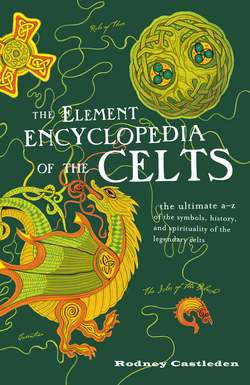Читать книгу The Element Encyclopedia of the Celts - Rodney Castleden - Страница 150
FOOD AND FEASTING
ОглавлениеCeremony surrounded the Celtic domestic hearth. Even more ceremony surrounded the provision of large meals. Banquets and feasting were major characteristics of the Celtic way of life.
Posidonius described a feast:
The Celts sit on hay and have their meals served up on wooden tables raised slightly above the earth. Their food consists of small numbers of loaves together with a large amount of meat, either boiled or roasted on charcoal or on spits. This food is eaten cleanly, but they eat like lions, raising up whole limbs in both hands and biting off the meat…
When a large number dine together they sit around in a circle with the most influential man in the centre, like the leader of the chorus, whether he surpasses the others in warlike skill, or lineage, or wealth. Beside him sits the host and next on either side the others in order of distinction…
The Celts sometimes engage in single combat at dinner. For they gather in arms and engage in mock battles, and fight hand-to-hand, but sometimes wounds are inflicted, and the annoyance caused by this may even lead to killing unless the bystanders restrain them. In former times, when the hindquarters were served up the bravest hero took the thigh piece, and if another man claimed it they stood up and fought in single combat to the death.
Feasts such as these were designed to reinforce the pecking order among the warriors, and to strengthen the ties among members of the band.
The main drinks in an Iron Age Celtic feast were beer and mead, though the nobility adopted wine as soon as the trade routes to the Mediterranean allowed. At first it was a very expensive luxury. There was even a tale current in Rome that the Celts had crossed the Alps and invaded Italy just to get closer to the vineyards.
